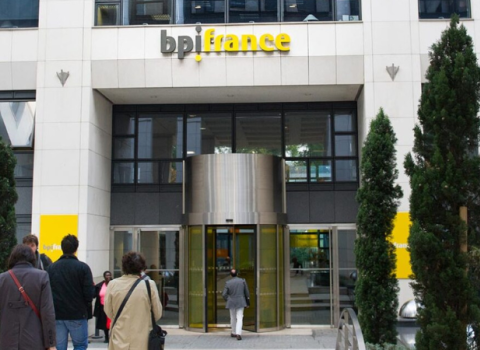The end of the summer signals the next stage in the reform of US patents, with the bill that aims to streamline the system – which currently has a backlog of some 1.2 million patents pending – reaching Congress.
The major change to be brought in by the bill is a move from the current US system of awarding patents to the “first-to-invent” to the “first-to-file” system used by other countries.
Supporters argue the first-to-file system makes patent ownership more certain because it is based on the patent filing date, saying this will reduce litigation and boost jobs because it stimulates innovation. However, detractors say such a system favours large companies with the resources to get patent applications in more quickly than resource-strapped start-ups, and thus hamper innovation.
“They have it backwards in trying to make US patent law more aligned with Europe and internationally,” said Erik Belt, an intellectual property attorney at McCarter & English in Boston. “We are the most innovative country in the world, partly because of our patent law protection.”
Critics of the bill point out that the number of patent applications that result in controversies over first-to-invent is miniscule, and so there is little effect on innovation. At the same time, first-to-invent assures inventors are not denied legitimate patent rights. In addition it is argued that rather than streamlining things, a first-to-file system will inevitably result in speculative applications, creating a further burden for US Patent and Trademark Office.
The Senate and House have already passed the act by strong margins. Now the Senate will try to agree with the House version and send the act to the President.
Should the President sign off on the patent reform, small companies will have to revise their fund-raising and business strategies, believes Belt. “Small companies will have to adapt and file early. And when they get financing, they will need to allot some of the money to patents and IP protection,” Belt said.
A case in point: Myriad Genetics patents
Patent protection is critical to small companies, who Belt said are unlikely to take risks on developing technologies unless they have robust intellectual property rights. The importance of this was highlighted in the recent ruling on the controversial Myriad Genetics’ breast cancer genes.
Last month the Federal Circuit Court of Appeals partially reversed a lower court decision, ruling by 2-1 that genes are patentable. However the court also said methods for comparing gene sequences cannot be patented. The case is likely to be appealed, lawyers said.
“This is a very good result for the biotech industry,” said Belt, who filed an amicus curiae (friend of the court) brief on behalf of the Boston Patent Law Association in support of Myriad Genetics. “The decision should be seen as promoting and protecting innovation and research in the biotech and pharmaceutical industries.” Belt and other attorneys who filed amicus briefs said that the lower court’s ruling would have had a wide-ranging negative impact on biotechnology, diagnostics, and vaccines companies.
“This is a very important decision to say patents are safe in the biotechnology and pharmaceutical industries. Without that certainty, it would hinder investment,” Belt added.
The case followed the lower court ruling in 2010 that the Myriad patents cover parts of the natural world and are therefore not patentable.
Isolated DNA
The appeals court reversed that decision, agreeing with Myriad’s claim that “isolated” DNA molecules do not exist in nature and are therefore eligible to be patented. However, the appeals court did agree with the district court’s decision that Myriad’s methods of comparing or analysing DNA sequences are not patentable, because they include no transformative steps and involve abstract, mental steps.
Commenting on the rulings, Myriad’s President and CEO Peter Meldrum said, “This decision is in the best interests of the agriculture, biotechnology and pharmaceutical industries, as well as the hundreds of millions of people whose lives are bettered by the products these industries develop based on the promise of strong patent protection."
Belt said he expects appeals on both rulings, most likely first going back to the federal circuit court and either asking for a rehearing among the three judges who ruled on the case or among the entire federal circuit judges. If the case is not resolved then, it could make its way to the Supreme Court.
“This is one battle, but not the war,” Belt said. “My guess is that there will be a lot more legal shouting before this is over, and another year’s worth of legal wrangling. One side or another, or both, will appeal.”
The American Civil Liberties Union (ACLU), which filed the original lawsuit against Myriad, said the ruling is a blow to the idea that patent law cannot be allowed to impede the free flow of ideas in scientific research. Chris Hansen, a staff attorney with the ACLU Speech, Privacy and Technology Project, said, “Human DNA is not a manufactured invention, but a natural entity like air or water. To claim ownership of genetic information is to unnecessarily block the free exchange of ideas.”
The lawsuit against Myriad charged that the breast cancer patents are illegal and restrict both scientific research and patients’ access to medical care, and that patents on human genes violate the First Amendment and patent law because genes are, “products of nature.”
In a dissenting opinion on the case, Judge William Bryson seemed to agree, noting that broad claims to genetic material present a significant obstacle to innovation in genetic medicine. “While Myriad has emphasised the biotechnology industry’s need of patent protection to encourage and reward research in this difficult and important field, there is another side to the coin. Broad claims to genetic material present a significant obstacle to the next generation of innovation in genetic medicine - multiplex tests and whole-genome sequencing. New technologies are being developed to sequence many genes or even an entire human genome rapidly, but firms developing those technologies are encountering a thicket of patents,” Bryson said.
Belt disagreed with Bryson’s opinion, saying, “It’s important to maintain strong patent rights so companies can commercialise on them.”
Belt pointed to a similar case that the biotechnology and life sciences industries will also be watching carefully, that of Mayo Medical Laboratories’ appeal of a lower court's decision that upheld two diagnostic method patents held by Prometheus Laboratories. The Supreme Court has agreed to hear the case, which could also have a wide impact on gene patenting and other intellectual property issues. The high court will consider whether two patents on methods held by Prometheus Laboratories are claiming natural phenomena, and thus cannot be protected by patent.
Prometheus sued Mayo Clinic in June 2004, alleging that a planned Mayo Medical Laboratories diagnostic test infringed two Prometheus patents. Mayo has maintained that those patents are invalid and unenforceable. In March 2008 the District Court dismissed the lawsuit and held that the patents are invalid because their claims wholly preempt all uses of a natural phenomenon. The Federal Circuit Court of Appeals has since reversed the District Court, and the Supreme Court has agreed to review the Circuit Court’s decision.





 A unique international forum for public research organisations and companies to connect their external engagement with strategic interests around their R&D system.
A unique international forum for public research organisations and companies to connect their external engagement with strategic interests around their R&D system.